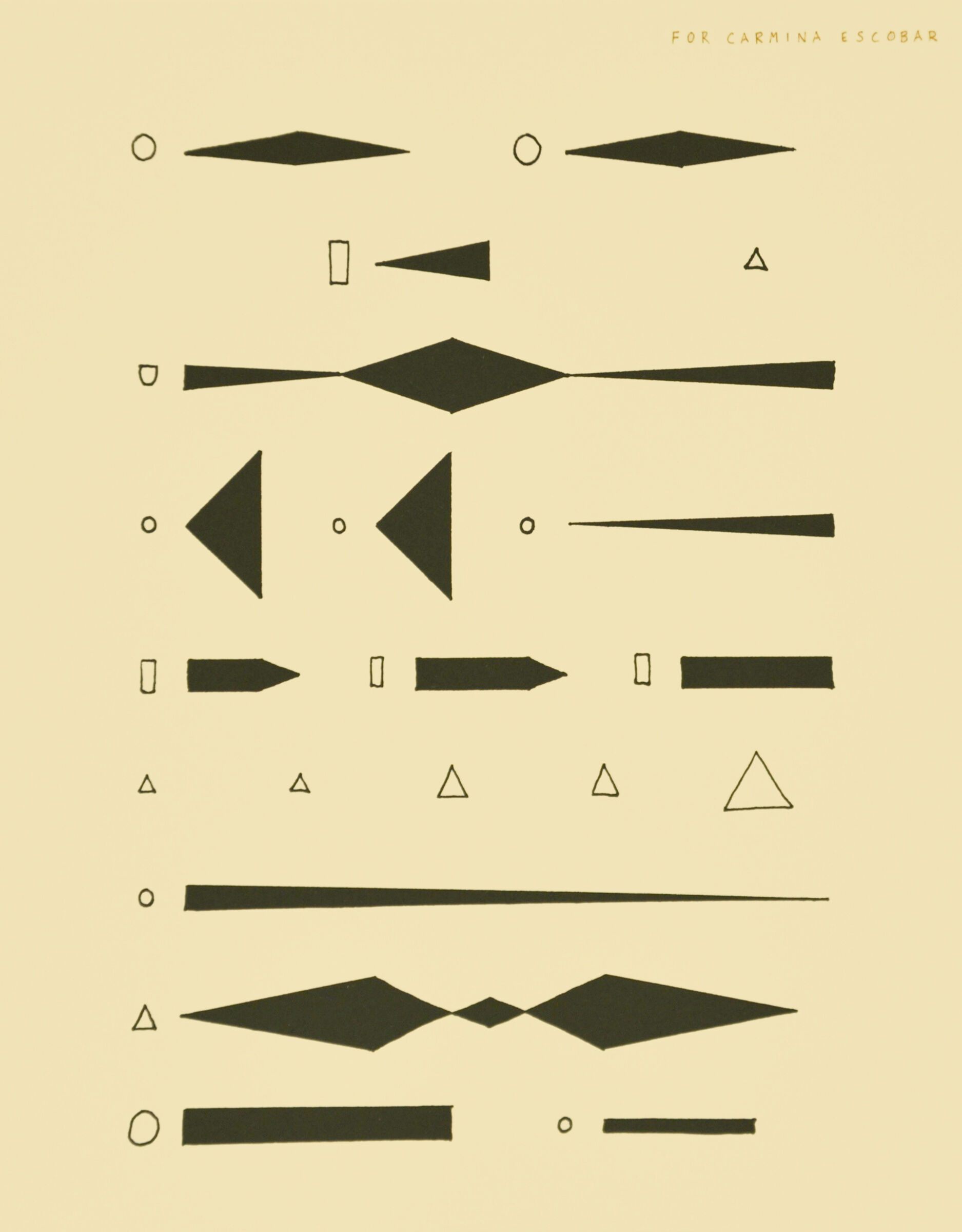Raven Chacon
“For me, when I have all these different projects, it is important that each has their own identity.”
— Raven Chacon
Raven Chacon is a Diné (Navajo) artist born in 1979 in Fort Defiance, Arizona, and is based in Albuquerque, New Mexico. Chacon studied at the University of New Mexico and at the California Institute of the Arts. He works across different mediums as a composer of chamber music, a performer of experimental noise music, and a visual artist. He performs regularly as a solo artist as well as in the performance art group Death Convention Singers, and is a former member of the interdisciplinary collective Postcommodity. Chacon also releases other musicians’ music from the Southwest as the founder of the Albuquerque record label SickSickSick Distro.
For the Biennial, Chacon presents three projects that explore sound, history, and Native resistance. In the thirteen musical arrangements titled For Zitkála-Šá (2018), the artist created prints that are each dedicated to different contemporary American Indian, First Nation, or Mestiza women working in music performance, composition, or sound art. In the video installation Three Songs (2021), the artist invited American Indian women to sing at a site where a battle had occurred, or where there had been a massacre, displacement, or relocation of their tribe. In the sound recording Silent Choir, Chacon captured a moment of dense silence at the Oceti Sakowin Camp, near the Standing Rock Reservation, during the ten-month No Dakota Access Pipeline resistance in 2016–17. In this recording, the artist presents the sounds of a group of hundreds of water protectors, headed by women leaders of the camp, confronting and staring silently at the Dakota Access Pipeline security and North Dakota state police barricading access to the lands north of the camp.
Activities
Artist as Observer
How do you make sounds visible?
Raven Chacon states, “What keeps me involved with my various projects is the unique worldview that each can hold.” Invite students to listen carefully to the sounds surrounding their living spaces for five minutes. Instruct them to use colors, lines, and shapes to create an abstract drawing that represents what they heard. Display and discuss their projects in the classroom.
Artist as Storyteller
How do you tell a story through sounds?
In describing his installation Three Songs, Raven Chacon said, “These songs of resistance, with only a snare drum as accompaniment, are co-composed with the singers . . . . The lyrics are in their mother tongues.” Instruct students to engage in deep listening. Go outside of the classroom and ask students to listen for ten minutes to all of the ambient sounds they hear. Encourage students to write down as many words and phrases that they hear in public space. Have students share their findings. Invite students to write an individual or group story using the words and phrases that they overheard during the listening exercise.
Artist as Experimenter
How can you create an orchestra with our bodies?
When talking about his collaborations, Raven Chacon describes, “I could see some solo artists never knowing when the thing is finished, when it’s done. With collaboration, everybody’s going to decide it’s done. I think for me, I try not to get in the trap of being unsure of what the piece is.” Encourage students to create sounds using any parts of their body. Create small groups for students to share their sounds with each other. Ask a student in each group to become the orchestra conductor. Each conductor will point at individual students to perform their sounds and determine the volume, order, and structure of their work. Have each group take turns being a conductor. Encourage each group to develop a score. Each group will collectively choose when their work is done. Have them all share their scores and discuss their process.
Artist as Critic
How can you represent the sounds of a protest?
On Thanksgiving weekend in 2016, during the No Dakota Access Pipeline resistance at Standing Rock, the women leaders of the camp led hundreds of protesters in a silent confrontation of pipeline security officers and North Dakota state police who were stationed on a bridge. In Chacon’s words, “An audio capture of dense silence, the field recording holds power: it instills in the listener knowledge of the women’s action and their sonic resistance.” Invite students to talk about recent social justice protests that they know of or have participated in. Encourage them to use Google video or other sources to research recordings of these protests. Using the voice app on a smartphone or an audio recording device, instruct students to make a three-minute recording that merges the sounds of different videos. Have them consider sound, volume, and repetition as strategies to make a sound recording. Ask them to present their work and talk about the process and challenges they encountered.
Additional Resources
spiderwebsinthesky.com: Artist’s website.
SPACE: Interview with Raven Chacon.
The American Academy in Berlin: Fellow spotlight, Raven Chacon.

